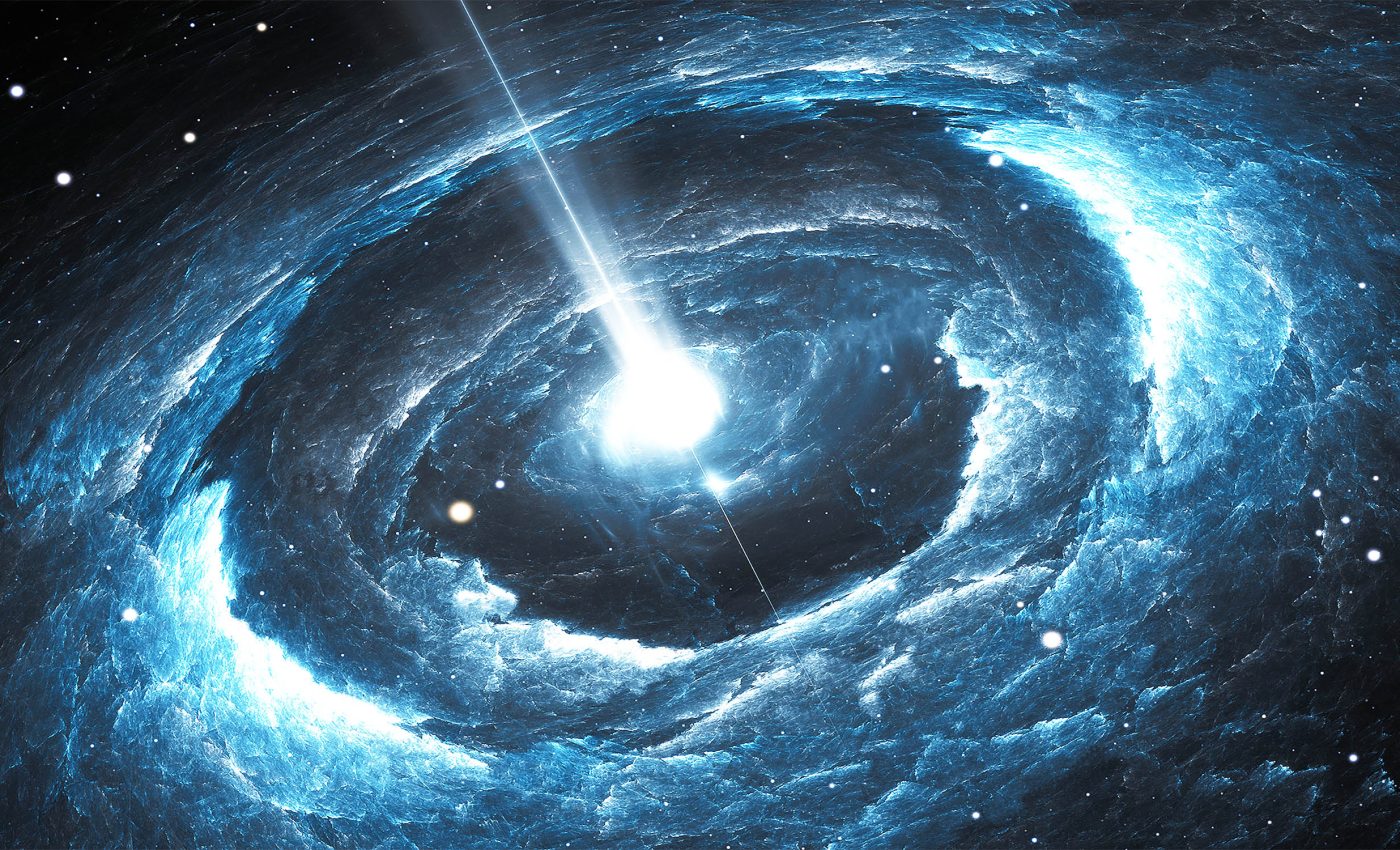
Pulsars are helping astronomers pinpoint dark matter
In a compelling display of cosmic detective work, scientists have leveraged the Universe’s most precise timekeepers — pulsars — to potentially uncover evidence of dark matter.
These rapidly spinning neutron stars emit beams of radiation at exact intervals, akin to cosmic lighthouses, making them exceptionally reliable for measuring time.
Pulsars are offering insights beyond cosmic time. Their steady ‘ticking’ might have brought us closer to unlocking one of the Universe’s greatest mysteries.
By meticulously analyzing the timing irregularities in their pulses, scientists are gathering clues that could help unravel the enigmatic nature of dark matter, which comprises about 27% of the Universe.
Leading these discoveries is Professor John LoSecco from the University of Notre Dame, presenting his research at the National Astronomy Meeting at the University of Hull.
Tracking dark matter with pulsar precision
“Science has developed very precise methods to measure time,” Professor LoSecco explained. “On Earth we have atomic clocks and in space we have pulsars.”
Pulsars’ clockwork-like precision has long captivated astronomers. These dense, rapidly spinning remnants of massive stars emit beams of radiation that sweep across the cosmos like a lighthouse beam.
As these beams intersect with Earth, we perceive them as regular pulses of radio waves. The accuracy of these pulses is astonishing, measurable to nanosecond precision, making pulsars some of the universe’s most precise natural clocks.
This extraordinary precision transforms them into invaluable tools for studying various cosmic phenomena, including the elusive presence of dark matter.
Gravitational lensing, pulsars, and dark matter
Dark matter has puzzled astronomers for decades. Though we can’t directly observe it, we know it exists due to its gravitational effects on visible matter.
Unlike ordinary matter, dark matter doesn’t interact with light or other forms of electromagnetic radiation, making it invisible to our telescopes.
Scientists estimate that dark matter comprises about 85% of the Universe’s matter. Its presence is deduced from gravitational influences on visible matter, yet its nature remains one of modern physics’ most significant unsolved mysteries.
Professor LoSecco’s research leverages the fascinating phenomenon known as gravitational lensing. Predicted by Einstein’s theory of general relativity, this effect occurs when the gravity of a massive object bends the path of light traveling near it.
“While gravitation has been known to slow down light for more than a century, there have been very few applications so far,” Professor LoSecco noted.
In this case, the researchers were looking for tiny delays in the arrival times of radio pulses from pulsars. These delays could indicate that the radio waves had traveled around an unseen concentration of mass – potentially a dark matter object – somewhere between the pulsar and our telescopes on Earth.
Cosmic hide and seek
Professor LoSecco and his team analyzed data from the PPTA2 survey release from the Parkes Pulsar Timing Array.
This ongoing project collects precise measurements of pulse arrival times using data from seven different radio telescopes around the world.
The team studied the timing of pulses from 65 ‘millisecond pulsars’, which rotate hundreds of times per second.
They were looking for specific patterns of deviation in the arrival times of these pulses that could indicate the presence of dark matter.
“We take advantage of the fact that the Earth is moving, the Sun is moving, the pulsar is moving, and even the dark matter is moving,” Professor LoSecco explained.
“We observe the deviations in the arrival time caused by the change in distance between the mass we are observing and the line of sight to our ‘clock’ pulsar.”
Tantalizing results
The results of this cosmic hunt were nothing short of fascinating. Professor LoSecco’s team identified approximately a dozen incidents that appear to be interactions with dark matter.
One particularly compelling finding suggested a distortion caused by an object with about 20% of the Sun’s mass.
“This object could be a candidate for dark matter,” Professor LoSecco noted.
To put this in perspective, a mass the size of the Sun can produce a delay of about 10 microseconds in the arrival time of pulsar signals.
The observations made by Professor LoSecco’s team boast resolutions on the order of nanoseconds – 10,000 times smaller.
This remarkable precision enables the detection of much smaller masses that could be candidates for dark matter objects.
Following pulsar paths to dark matter
In summary, this important research provides tantalizing evidence of dark matter while holding vast implications for other areas of astrophysics.
As a side effect, it improves the pulsar timing data sample, which is used to search for low-frequency gravitational radiation.
Dark matter objects add ‘noise’ to that data. By identifying and removing this noise, researchers can clean the samples of some variability, potentially improving the accuracy of searches for gravitational waves.
“The true nature of dark matter is a mystery,” Professor LoSecco concluded. “This research sheds new light on the nature of dark matter and its distribution in the Milky Way and may also improve the accuracy of the precision pulsar data.”
These findings invite us to ponder the broader implications of dark matter in our universe. As we continue to explore these cosmic mysteries, we stand on the brink of revolutionary discoveries that could reshape our understanding of the cosmos.
—–
Like what you read? Subscribe to our newsletter for engaging articles, exclusive content, and the latest updates.
Check us out on EarthSnap, a free app brought to you by Eric Ralls and Earth.com.
—–













